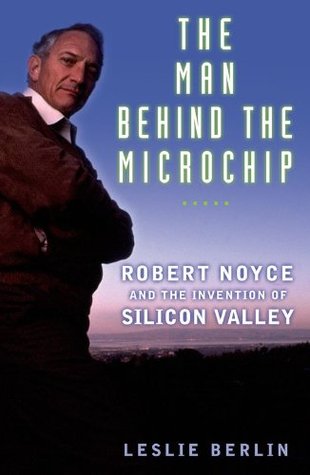More on this book
Community
Kindle Notes & Highlights
“no guts, no glory.”
He was a brilliant, wealthy, generous, greatly beloved man gifted with enormous vision.
Little more than a dozen years ago, the San Jose Mercury News declared Noyce the Thomas Edison and the Henry Ford of Silicon Valley.
Every night before he fell asleep, Noyce would mentally rehearse each of his dives in slow motion until he could see himself executing them perfectly. He called this habit “envisioning myself at the next level,” and he carried it with him throughout his life. In his mind’s eye, he could always see himself achieving something more.44
Picasso’s famous line about artistic creativity—“I do not seek; I find”—Noyce said that he invented in the same way.3
Once his attention was engaged, Noyce did not start small, and he did not turn to journals or patent files for ideas. Instead, he tried to “think about the fundamentals of the physics”—as big a starting point as possible—and he refused to ask himself whether or not an idea ought to work according to the most current research in the field. In his opinion, there were only two relevant questions in the earliest stages of scientific innovation: “Why won’t this work?” and “What fundamental laws will it violate?”
The importance of getting our basics right which is often overlooked!! The true nature of a scientist is to breakdown the most complex design into simple chunks!!
An integrated circuit is a complete electronic circuit built on a chip of silicon small enough to be carried off by an ant.
Creative freedom and collaboration, which proved crucial to the young company’s technical success, blossomed under Noyce’s laissez-faire management of the lab.28
Noyce saw the integrated circuit as essentially a process breakthrough, not a scientific achievement.
“Both of these are necessary. You’ve got to realize that it would be desirable to reach a given goal, and then you’ve got to have a method of getting to that goal before you can really … jump in with both feet and start dumping the effort into it.”
Noyce once said that “the job of the manager is an enabling, not a directive job … coaching, and not direction, is the first quality of leadership now. Get the barriers out of the way to let people do the things they do well.”
Once Noyce believed in the idea himself, he pushed it up the corporate hierarchy with little concern for how foolish it might have sounded or made him appear.
Later, the once-crazy idea became standard operating procedure for the entire industry.
As a manager, Noyce remained calm in the face of potential disasters that had others panicking.
Noyce’s greatest strength as a manager was that he gave people confidence in themselves.
He also calculated that as Fairchild built more and more circuits, experience curves and economies of scale would enable the company eventually to build the circuits for so little that it would be possible to make a profit even on the seemingly ridiculously low price. Gordon Moore has said that Noyce’s decision to lower prices to stimulate demand so that the production volumes could grow and the cost of production be decreased accordingly was as important an “invention” for the industry as the integrated circuit itself.
Invention is best understood as a team effort, with the person ultimately called “inventor” occupying much the same space as the pitcher who has just had a perfect game.
The very geniality and openness to new ideas that contributed to Noyce’s success as a leader and entrepreneur hampered his ability to manage a large organization.
As business historian Alfred Chandler has so aptly put it, “Fairchild’s problem was that it produced entrepreneurs, not products.”83
When he resigned from Fairchild, the human resources manager, instead of trying to convince him to stay, asked how he could join Noyce and Moore, too.


